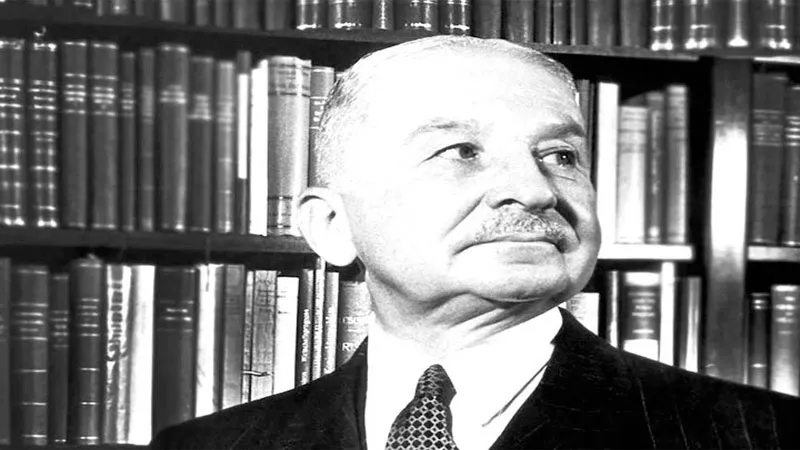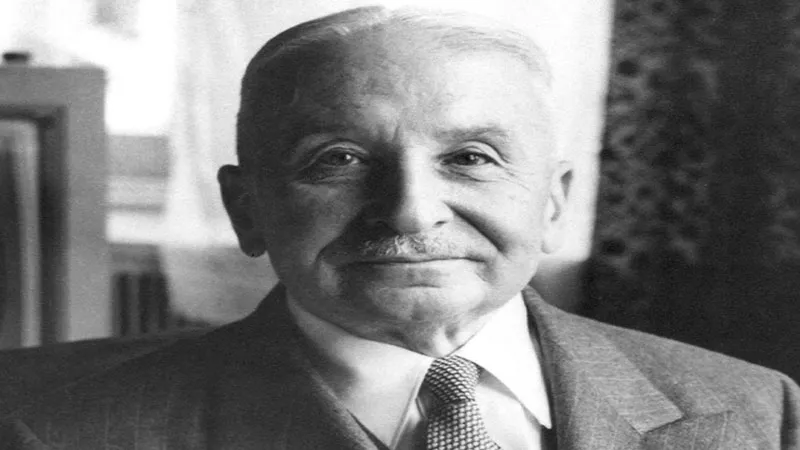Entrepreneurship, And Ethical Governance: A Comparative Study Of Ludwig Von Mises And The Political Mehr Of Ancient Iran – OpEd
This article examines the convergence of the economic views of Ludwig von Mises on self-reliance and entrepreneurship with the ancient Iranian political tradition of Mehr. Mehr, as reconstructed in Mehr cosmology (Mehr-shenasi) and institutionalized in the ‘Axis of Hope’ model, provides a framework for governance. The author argues that the politics of Mehr anticipated many key principles emphasized by Mises centuries ago; principles such as: decentralized administration and avoidance of power concentration, ethical and responsible entrepreneurship, voluntary cooperation among people, and minimal reliance on central authority.
The Axis of Hope represents an effort to translate these convergent traditions into a contemporary political architecture, integrating economic liberty and ethical responsibility within a unified system of governance. By situating Mises within a broader historical and ethical framework, the article highlights how ancient Iranian models offer a moral and institutional foundation for the ideals of laisses-faire economics.
Introduction
Ludwig von Mises (1881–1973), as a central figure of the Austrian School of economics, developed an economic and moral philosophy that emphasized the primacy of individual initiative, voluntary cooperation, and the entrepreneur’s role in advancing social welfare. In Human Action (1949), Mises presented human society as a vast network of voluntary exchanges, where prosperity arises from the creative energies of free individuals responding to the needs and preferences of others (Mises, 1949, pp. 257–262). 257-262). His earlier work Liberalism (1927) similarly warned that bureaucratic intervention distorts this natural order, undermines individual responsibility, and erodes the moral basis of a free society (Mises, 1927, pp. 27, 52). 27-52).
What Mises articulated in the economic context finds a striking parallel in the Political Mehr of ancient Iran. As reconstructed in Cosmology of Mehr, Political Mehr framed governance not as the domination of a central authority, but as a sacred trust (mehr) binding ruler, community, and cosmos in a shared ethical order. The duty of governance was to uphold justice (asha), ensure peace, and safeguard the conditions for self-reliance at the community level (Yarshater, 1983; Boyce, 1979). The Axis of Hope model emerges as a modern attempt to institutionalize these principles, providing a political structure that aligns Misesian economic liberty with Mehr’s ethical governance.

Misesian Economics: The Ethics of Self-Reliance
Mises’s economic thought places the entrepreneur at the heart of human progress. Entrepreneurs, according to Mises, are those who bear uncertainty, anticipate future market conditions, and coordinate resources to meet human needs. This process is not dictated by a central authority, but emerges organically through voluntary exchanges mediated by price signals in a free market (Mises, 1949, pp. 252–255). 252-255). The entrepreneur, in effect, becomes a moral agent whose success depends on their ability to serve others through peaceful cooperation.
Mises underscored that private ownership of the means of production is essential for rational economic calculation. Prices, determined by uncoerced exchanges, convey information about relative scarcities and preferences. State interference—whether through price controls, subsidies, or nationalization—destroys this information system and substitutes arbitrary commands for individual judgment (Mises, 1927, p. 27).
27).
Importantly, Mises viewed economic freedom not as an end in itself, but as a vital component of human dignity. He argued that “freedom in economic arrangements is itself a component of freedom broadly understood” and that the market system reflects the ethical principle that individuals must be free to shape their destinies through voluntary cooperation (Mises, 1927, p. 52). 52).
The self-reliance that Mises celebrated is therefore not only an economic condition but a moral stance against paternalism and coercion.
The Political Mehr: Ethical Governance and Entrepreneurial Duty
The Political Mehr, as elaborated in Cosmology of Mehr, represents an ancient model where governance was conceived as a covenant (mehr) between the ruler and the community, anchored in ethical obligations rather than arbitrary power. The legitimacy of kingship derived from fidelity to truth (asha) and justice, as well as the protection of the people’s capacity for self-reliance and prosperity (Ferdowsi, c. 1010; Yarshater, 1983).
Historical texts, including the Shahnameh, depict kings who were judged not by the splendor of their courts, but by their success in safeguarding the autonomy of communities, maintaining fairness in taxation, and defending the common good. As Ferdowsi’s heroes remind us, the highest virtue of leadership was to foster conditions in which “each man might reap the fruit of his labor” and “no tyrant oppress the weak” (Ferdowsi, c. 1010). Economic initiative was integrated into this ethical cosmos: to cultivate land, to perfect one’s craft, or to engage in honest trade was not only permitted, but morally required as a contribution to the collective welfare (Boyce, 1979).
Communities in the Mehrian order were largely self-governing in economic and social matters. They managed common lands, waters, and resources, and organized collective works such as irrigation, without the need for a heavy central bureaucracy. The state’s primary role was to defend the moral and legal order, uphold justice, and protect the people’s self-reliance from external or internal threats (Yarshater, 1983).

The Axis of Hope: A Modern Synthesis of Mehr and Mises
The Axis of Hope model translates these ancient principles into a contemporary political architecture that institutionalizes both the economic liberty celebrated by Mises and the ethical governance of Mehr. Its four-branch system comprises:
- Decentralized executive power, distributed among autonomous community governments aligned with traditional Majles constituencies. Each community, comprising approximately 270,000 people, governs itself in economic, cultural, and legal matters, thus ensuring that decision-making remains close to those affected.
- A bicameral legislature, representing both territorial communities and professional or sectoral groups, which ensures that national policy reflects both local and functional perspectives, and prevents the concentration of power in a single interest or region.
- An independent judiciary, charged with interpreting laws grounded in Mehr and protecting both individual and community rights against encroachment by any arm of government.
- A national wealth fund, which holds the collective wealth of the nation (such as natural resources) and invests in private entrepreneurial initiatives. Rather than redistributing wealth through direct welfare payments or government-owned enterprises, the fund operates as a catalyst for innovation and self-reliance across all communities.
This model operationalizes what Mises envisioned: a society where economic coordination arises not from state planning but from the decentralized actions of free individuals and communities. At the same time, it embodies Mehr’s ethical commitments: that governance is a sacred trust to enable self-reliance, justice, and moral responsibility.
The national wealth fund represents a particularly innovative synthesis. Whereas Mises was wary of any collective fund controlled by the state, the Axis of Hope reimagines such a fund not as a bureaucratic tool, but as a mechanism to empower private entrepreneurship, with strict safeguards against political manipulation. The fund invests in ventures proposed by citizens, judged by community standards of feasibility and ethical merit, thus blending economic freedom with collective stewardship.
Conclusion
The “Mihr Policy” in ancient Iran and Ludwig von Mises’s economic philosophy converge on a fundamental truth: freedom, justice, and prosperity arise from the voluntary and self-reliant actions of individuals and societies, within an ethical order. The “Axis of Hope” offers a modern framework that unites these two traditions, creating a political economy in which economic freedom and moral responsibility are not opposing values, but rather complementary and mutually reinforcing principles.
In an era when societies face the twin dangers of authoritarianism and amoral market fundamentalism, this synthesis provides a powerful alternative. It reminds us that true freedom requires more than the absence of coercion; it demands the presence of ethical commitments and institutional structures that enable self-reliance, solidarity, and justice. As both Mises and the tradition of Mehr affirm, the dignity of a society rests not in the power of its rulers, but in the moral and creative energies of its people.

